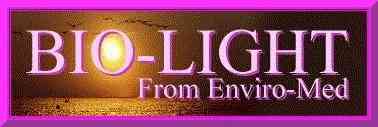 |
Enviro-Med 1600 S.E. 141st Ave. Vancouver, WA 98683 800-222-DAWN 800-222-3296 360-256-6989 |
|---|
| Contents: |
A Controlled Study Of Light Therapy For Premenstrual Depression
|
|---|---|
Division of Mood Disorders, Department of Psychiatry, University of B.C., 2255 Wesbrook Mall, Vancouver, Canada, V6T 2A1; 1Vancouver Hospital and Health Sciences Centre, UBC Site; 2B.C. Women's Hospital and Health Sciences Centre. Objective: We report preliminary results from a randomized, placebo-controlled study of dim versus bright light therapy in patients with late luteal phase dysphoric disorder (LLPDD, equivalent to premenstrual depression or dysphoric disorder). Methods: In a PMS Clinic, 14 female patients meeting DSM-III-R criteria for LLPDD (not selected for seasonality) underwent a 6-cycle randomized, counter-balanced, cross-over study. Each subject completed 2 cycles of prospective baseline monitoring of mood and premenstrual symptoms, followed by 2 cycles of each treatment. During the last 2 weeks of each treatment cycle, patients were treated at home with a cool-white fluorescent light box, for 30 minutes between 7 and 9 p.m. Patients were randomized to receive either 10,000 lux white light (active condition), or 500 lux red light (placebo condition). After 2 treatment cycles, patients were crossed over to the other condition for another 2 cycles. Deception was used to obscure study objectives, and pre-treatment expectation ratings were no different between conditions. Patients were assessed each cycle at the end of the follicular and luteal phases by blinded raters using standardized depression rating scales (29-item Hamilton Depression Rating Scale (HAM-SAD), Beck Depression Inventory (BDI), Clinical Global Impression (CGI), and the Self-rating Scale for Premenstrual Tension Syndrome Scale (PMTS). Differences between luteal phase and follicular phase scores within each cycle were summed across the 2 cycles. Non-parametric analyses (Friedman's 2-way ANOVA with planned comparisons) were used to compare each treatment with baseline conditions. Results: Ratings improved under both active and placebo treatment conditions. However, the bright white light condition significantly reduced depression scores (29-item Ham-D, BDI, CGI) and PMS scores (PMTS) during the symptomatic luteal phase compared to baseline (p<0.05), while the dim red light condition did not. During the bright white light treatment, patients were rated as much or very much improved on the CGI in 89% of the cycles, compared to 65% of the cycles in the dim red light condition (p<0.03). There were no significant effects of order of treatment. Side effects of the light therapy were minimal. At study completion, 10 patients favoured the white light overall, while 3 favoured the red light, and 1 had no preference. Conclusions: These results suggest that bright light therapy is an effective treatment for premenstrual depression, compared to a placebo dim light condition. The therapeutic effects of bright light were noted in both mood and physical symptoms, and the side effects were minimal. References:
SLTBR Abstracts, Volume 9, 1997 |
|
Back to Articles |
[Contents] [Home] [Therapy] [Lights] [Order] [Articles] [About] [Feedback] [Site Map] DISCLAIMER: Enviro-Med cannot offer medical advice or recommend which individuals should receive light therapy for seasonal affective disorder, winter blues or other conditions. We advise that light therapy for seasonal affective disorder or other conditions be prescribed by a physician or other qualified health care professional and duration and timing supervised by the same. Consult with your physician to rule out any ophthalmological or other conditions that might preclude the use of light therapy. Copyright © 1997 Enviro-Med, http://www.BIO-LIGHT.com/ MAILTO:Bio-Light@Bio-Light.com
|